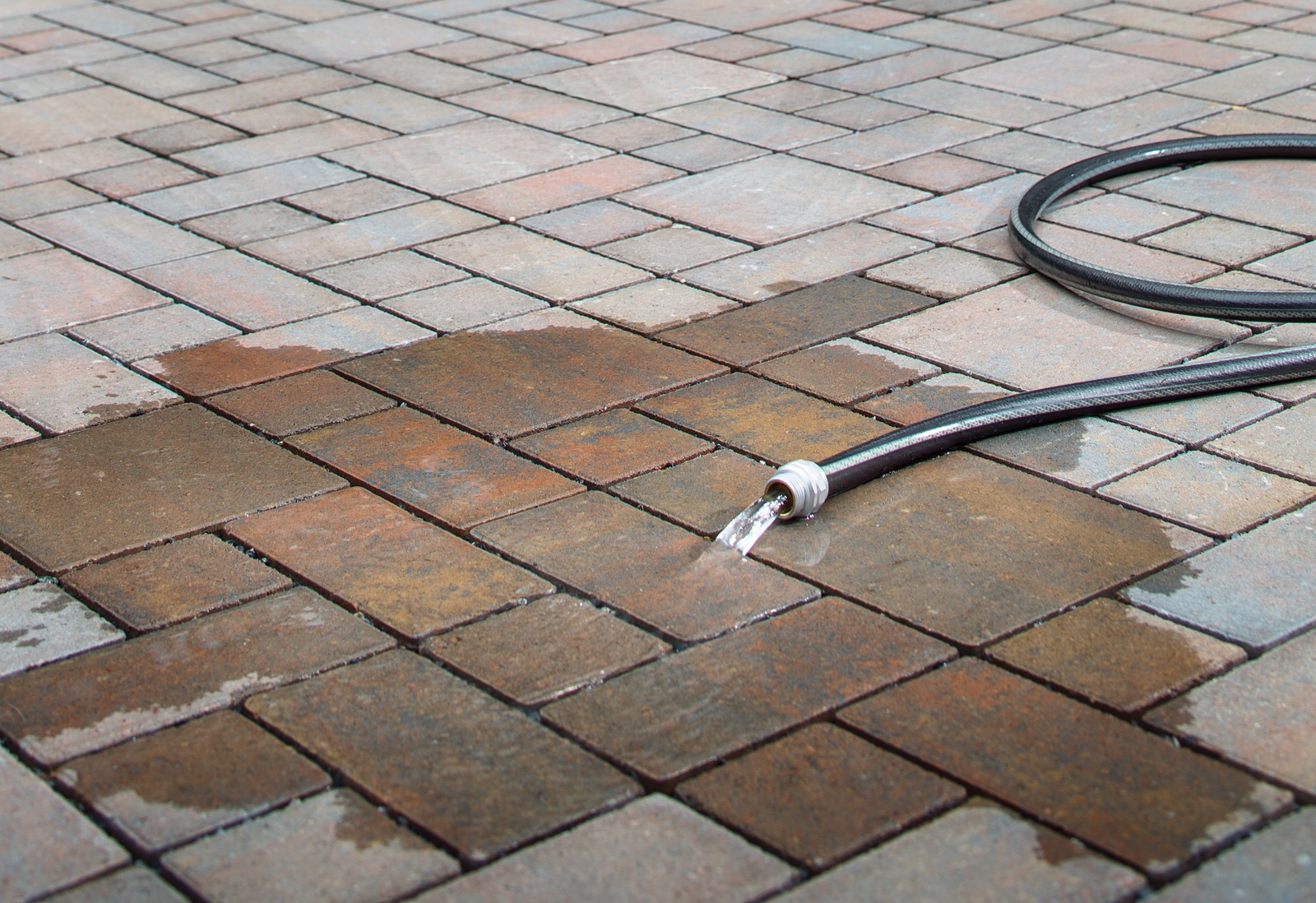Every time it rains, streets and parking lots create stormwater runoff which carries oil and grease and other harmful chemicals off with it, overloading stormwater systems and creating flooding problems. The major contributor to massive runoff volumes are impervious pavements like concrete and asphalt which constitute the majority of our streets and other drivable areas.
No one understand this better than developers who are looking for environmentally responsible “low-impact” ways to minimize their impact on the environment; particularly water quality issues which are a flashpoint of concern in every community.
A common sense solution for controlling stormwater runoff and its effects are to utilize Permeable Interlocking Concrete Pavers (PICP). Indeed, permeable pavers have made such a difference that they’ve become an essential part of the low-impact development toolbox.
HOW IT WORKS
PICP works by using solid concrete pavers installed on top of an open graded base and sub-base. The joints or openings are filled with an even smaller aggregate that makes the system 100% permeable. The base and sub-base become a reservoir that not only filters the water as it runs through the system, the sub-base effectively traps suspended solids, processes nutrients and oils, and can immobilize heavy metals, holding the runoff till it can eventually infiltrate into the ground or be attenuated and slowly discharged, similar to what you would have in a natural watershed.
Similar to permeable pavers is permeable pavement that has voids in the pavement surface followed by an aggregate sub-base over undisturbed soil. These voids make it easy for water to pass through the pavement to either be stored or infiltrated.
Regardless of whether you are using permeable pavers or pavement, your choice can reduce annual runoff for parking lots, roadways, low speed driving areas, and more. They can reduce the impact to existing stormwater infrastructure while creating a safer surface by removing standing water.
Click here to learn more about the Aqualine Series of permeable pavers by Belgard.
CONSERVING LAND
In conventional stormwater drainage designs, ponds can consume much of the site. These ponds have limited alternative applications and reduce the site’s income generating footprint. PICP makes it possible for developers to reduce or eliminate these retention and detention areas, creating more green space while eliminating runoff, allowing lands that would otherwise be consumed by the pond to be transformed into usable green space, recreational areas, or even reclaimed for increased development.
BEST MANAGEMENT PRACTICE
The U.S. Environmental Protection Agency and several state agencies consider PICPs to be a filtration “best management practice” (BMP). An increasing number of cities, counties and states are incorporating them into land development and runoff standards, low-impact development guidelines and design manuals on stormwater control.
Permeable interlocking concrete pavers fits into municipal stormwater management plans in most communities. For example, in an older highly urbanized area with almost no drainable capacity remaining in their storm sewers, PICP can help reduce demand for that drainage capacity and minimize flooding, while helping the municipality control its stormwater issues created by parking lots and low speed driving areas.
PERMEABLE PAVEMENT IN ACTION
- Designers of a parking lot project at Morton Arboretum in Lisle, IL, used permeable pavement designed structurally to withstand heavy truck and bus loads to decrease thermal loads to the lake.
- The EPA-funded Jordan Cove Watershed project in Waterford, CN, paved an entire subdivision in permeable pavement, including residential driveways, bordering the Long Island Sound estuary. Studies showed that doing so recharged the local aquifer, slowed water runoff velocities, oxidized and filtered pollutants, and cooled the subsurface water before it entered the estuary.
- The Harbourfront Fire Station in Toronto, Canada, paved its entrance and parking lot to meet a requirement by the City of Toronto to reduce runoff pollution to Lake Ontario. The pavement is plowed and salted in the winter, testifying to the ability of PICP to withstand heavy loads from fire trucks in a winter environment with deep penetration of frost in pavements.
- Lastly, designers with The Hilton Garden Inn in Calabasas, CA, paved the hotel driveway, entry area and parking lot with PICP to satisfy the City’s stormwater management requirements. Not only did the project meet code, but the pavers provided the hotel with an upgraded look.
Download our Guide to Stormwater Management for more resources that can help you reduce runoff and pollution.


